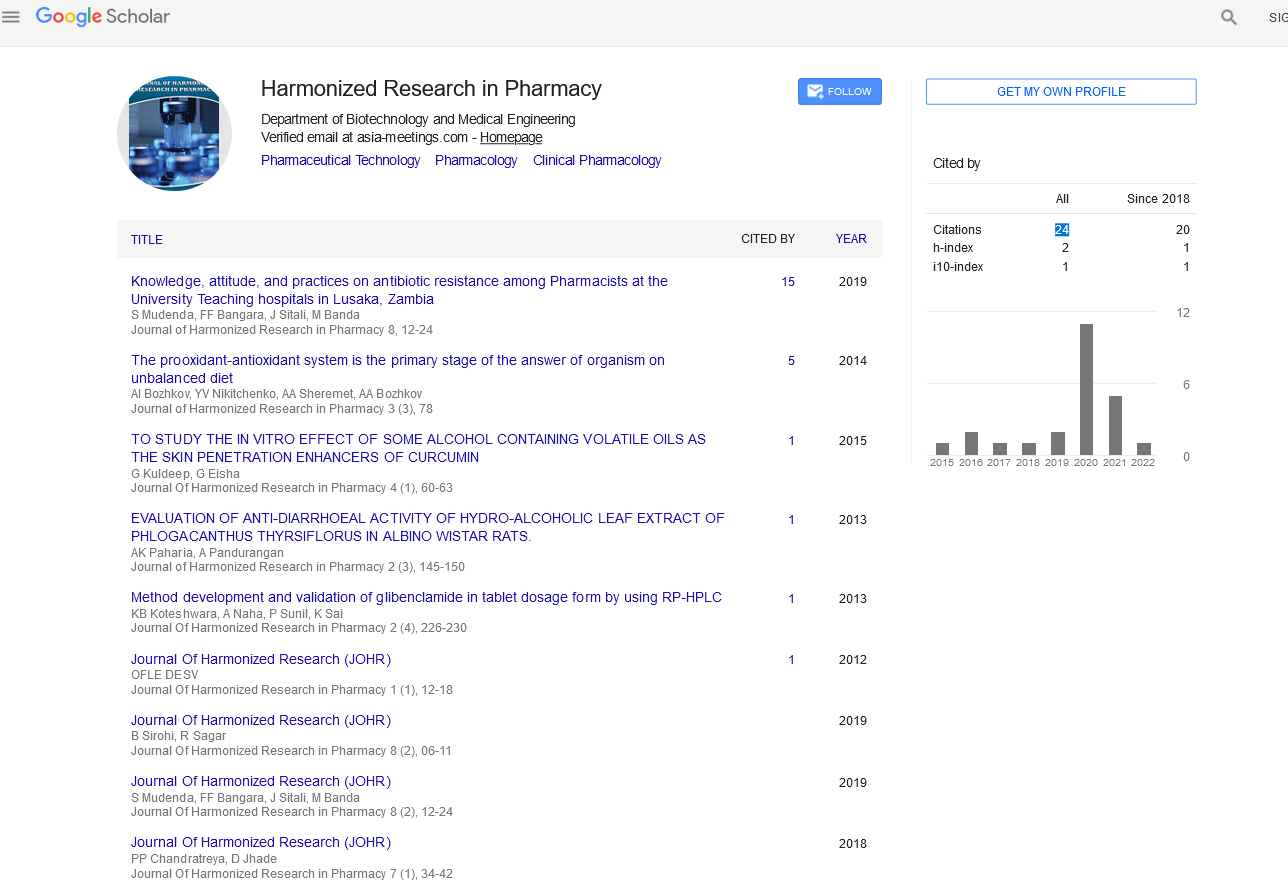DETERMINATION OF ANTIBACTERIAL ACTIVITIES AND MODE OF ACTION OF DIFFERENT FRACTIONS OF ACACIA ARABICA LAM
Abstract
Author(s): Rajbhan Kushwaha, D.N. Jhade, Sunil Shah, Chandra Kishor Tyagi, Mithun Kumar Verma
Micro organisms are subject to either favorable or antagonistic reactions owing to the presence of other living organisms. To avoid the side effects of synthetic drug in the recent years herbal drugs and their formulations are largely in use. Here we also used the fractions of extract of Acacia Arabica lam for the antimicrobial study by using the antibiotic as a standard. So; it was proposed to attempt antimicrobial study and Minimum Inhibitory concentration of fraction of bark of acacia Arabica lam. It is evident from literature survey that no antimicrobial method was mention on the various fractions of Acacia arabica bark as well as its mode of action. In present study, an attempt has been made to derive the antimicrobial action and its mode of action by using different strains of bacteria on the different fractions of Acacia Arabica The development of antimicrobial drugs represents one of the most important advances in therapeutics, both in the control or cure of serious infections and in the prevention and treatment of infectious complications of other therapeutic modalities such as cancer chemotherapy and surgery. Antimicrobial agents are frequently used before the pathogen responsible for a particular illness or the susceptibility to a particular antimicrobial agent is known. This use of antimicrobial agents is called empiric therapy and is based on experience with a particular clinical entity. The usual justification for empiric therapy is the hope that early intervention will improve the outcome; in the best cases, this has been established by placebo-controlled, double-blind prospective clinical trials. Key words: Acacia arabica Lam Bacillus subtilis, Staphylococcusaureu, Antibacterial activity

Google Scholar citation report
Citations : 147
Journal of Harmonized Research in Pharmacy received 147 citations as per google scholar report









